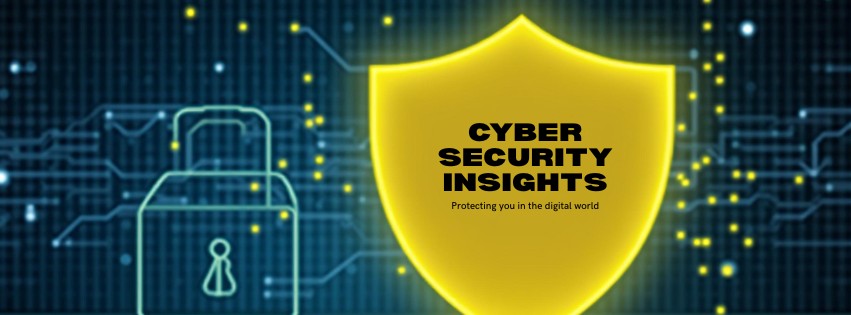
Ransomware Operations Surge Following Qilin’s New Pattern of Attacks
Ransomware’s Relentless Ascent: Navigating the Post-Qilin Landscape
The digital world is a constant battleground, and the latest intelligence from cybersecurity experts paints a concerning picture: ransomware operations are experiencing a significant surge. This uptick is not merely business as usual; it’s intricately linked to the evolving tactics, techniques, and procedures (TTPs) observed in groups like Qilin. Understanding this shift is paramount for any organization striving to maintain robust digital defenses.
Unpacking the Ransomware Resurgence: What’s Driving the Influx?
The Cybersecurity News report highlights a clear trend: a surge in ransomware activity. But what’s fueling this intensified criminal enterprise?
The Qilin Influence: A Precursor to Broader Trends
Qilin, a particularly aggressive ransomware group, has been at the forefront of innovation in extortion tactics. Their new patterns of attacks, which often involve sophisticated evasion techniques and multi-layered extortion, appear to be serving as a blueprint for other ransomware gangs. This adoption of successful TTPs by a wider array of threat actors contributes significantly to the overall increase in incidents.
Exploitation of Known Vulnerabilities: The Low-Hanging Fruit
While some attacks leverage zero-days, a substantial portion of ransomware breaches still capitalize on unpatched vulnerabilities in widely used software and systems. These are the entry points that, if not addressed promptly, serve as open invitations for malicious actors.
- CVE-2021-44228 (Log4Shell): Although older, the pervasive nature of Log4j means that instances of this vulnerability still exist and are exploited. A simple scan can reveal unpatched systems. CVE-2021-44228
- CVE-2024-21315 (Microsoft SharePoint Server): Recent critical vulnerabilities in applications like SharePoint Server offer lucrative targets for ransomware groups seeking initial access. Staying updated on Microsoft’s Patch Tuesday is crucial. CVE-2024-21315
- Unpatched RDP and VPN vulnerabilities: Remote Desktop Protocol (RDP) and Virtual Private Networks (VPNs) remain prime targets if configurations are weak or patches are missing.
The Appeal of Ransomware-as-a-Service (RaaS)
The “as-a-Service” model has lowered the barrier to entry for aspiring cybercriminals. Even individuals with limited technical skills can now launch sophisticated ransomware attacks by subscribing to RaaS platforms. This democratization of cybercrime inherently leads to a higher volume of attacks.
Outlining the Threat: Understanding the Modus Operandi
Initial Access: The First Breach
This phase often involves exploiting vulnerabilities, phishing campaigns, brute-forcing weak credentials, or compromising remote access services. The goal is to gain a foothold within the target network.
Reconnaissance and Lateral Movement: Mapping the Network
Once inside, attackers spend time understanding the network’s layout, identifying critical systems, and locating valuable data. They move laterally, often escalating privileges to gain access to more sensitive areas.
Data Exfiltration: The Double Extortion Tactic
Before encryption, many ransomware groups, including those influenced by Qilin, exfiltrate sensitive data. This “double extortion” tactic provides an additional layer of leverage, threatening to leak the stolen data if the ransom is not paid.
Encryption and Ransom Demand: The Final Blow
Finally, critical files and systems are encrypted, rendering them inaccessible. A ransom note is typically left, demanding payment (often in cryptocurrency) for the decryption key.
Summary of Outlines:
The current surge in ransomware is a multifaceted issue, driven by the adoption of advanced tactics from groups like Qilin, the continued exploitation of unpatched vulnerabilities, and the proliferation of Ransomware-as-a-Service. The attack lifecycle typically progresses from initial access and internal reconnaissance to data exfiltration for double extortion, culminating in the encryption of systems and a ransom demand. Understanding this blueprint is key to developing effective defensive strategies.
Remediation and Prevention: Fortifying Your Defenses
The good news is that many ransomware attacks are preventable or can be mitigated effectively with a proactive and layered security approach.
Patch Management: Your First Line of Defense
Regularly apply security patches and updates to all operating systems, applications, and network devices. Automate this process where possible to ensure timely deployment.
Robust Backup and Recovery Strategy: Your Last Resort
Implement a 3-2-1 backup strategy: at least three copies of your data, stored on two different types of media, with one copy off-site and isolated from the network. Regularly test your recovery procedures.
Multi-Factor Authentication (MFA): Securing Access
Enforce MFA for all remote access, privileged accounts, and critical systems. This significantly reduces the risk of credential compromise.
Network Segmentation: Containing the Breach
Divide your network into smaller, isolated segments. This limits the lateral movement of attackers if a breach occurs, preventing them from accessing critical assets.
Employee Training and Awareness: The Human Firewall
Regularly educate employees about phishing, social engineering tactics, and the importance of strong passwords. A well-informed workforce is a powerful defense.
Endpoint Detection and Response (EDR): Proactive Monitoring
Deploy EDR solutions to monitor endpoints for suspicious activity, detect anomalies, and respond to threats in real-time.
Incident Response Plan: Be Prepared
Develop and regularly test a comprehensive incident response plan. Knowing how to react swiftly and effectively can minimize the damage of an attack.
Essential Tools for Ransomware Defense
| Category | Tool Examples | Purpose |
|---|---|---|
| Patch Management | WSUS (Windows Server Update Services), ManageEngine Patch Manager Plus, Ivanti Patch for MEM | Automating and centralizing software updates. |
| Backup & Recovery | Veeam Backup & Replication, Acronis Cyber Protect, Carbonite, Commvault | Creating secure, immutable backups and facilitating rapid data restoration. |
| MFA Solutions | Duo Security, Okta, Microsoft Authenticator, Google Authenticator | Adding an essential layer of security to user logins. |
| Endpoint Protection (EDR/XDR) | CrowdStrike Falcon, SentinelOne Singularity, Microsoft Defender for Endpoint, Trend Micro Apex One | Detecting, containing, and responding to threats on endpoints. |
| Network Segmentation | Cisco DNA Center, VMware NSX, Palo Alto Networks Next-Gen Firewall | Creating isolated network zones to limit breach impact. |
| Vulnerability Management | Tenable.io, Qualys, Nessus, Acunetix | Identifying and prioritizing security weaknesses in systems and applications. |
| Security Awareness Training | KnowBe4, Cofense, Mimecast | Educating employees on cybersecurity best practices and threat recognition. |
Key Takeaways for a Robust Defense
The surge in ransomware operations, fueled by evolving tactics and accessible RaaS models, underscores the critical need for proactive cybersecurity. Organizations must adopt a multi-layered defense strategy that prioritizes strong foundational security practices.
- Proactive Patching: Stay ahead of attackers by consistently applying security updates.
- Layers of Defense: Implement a defense-in-depth strategy, combining technical controls with human awareness.
- Test and Validate: Regularly test your backups, incident response plans, and security tools to ensure their effectiveness.
- Assume Breach: Design your security with the assumption that a breach could occur, focusing on minimizing its impact.
- Stay Informed: Keep abreast of the latest threat intelligence and vulnerability disclosures.
In this dynamic threat landscape, complacency is the greatest vulnerability. By embracing these principles and leveraging appropriate tools, organizations can significantly enhance their resilience against the persistent and evolving threat of ransomware.
“`





